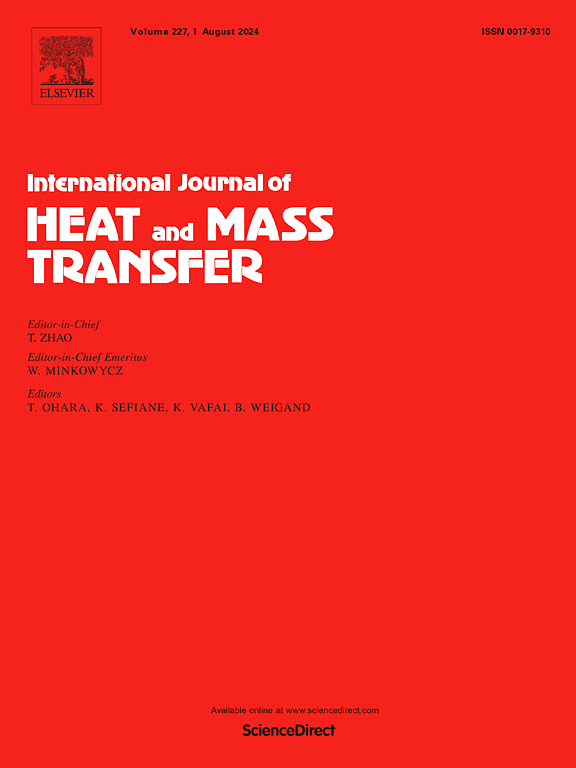基于分数热传导模型的中等厚度微板谐振器中的热弹性阻尼
IF 5.8
2区 工程技术
Q1 ENGINEERING, MECHANICAL
International Journal of Heat and Mass Transfer
Pub Date : 2024-11-12
DOI:10.1016/j.ijheatmasstransfer.2024.126394
引用次数: 0
摘要
热弹性阻尼是共振器在室温下工作时产生内在能量损失的基本机制。准确预测热弹性阻尼对于设计和制造高性能微型谐振器至关重要。本研究对相对较厚的微板谐振器中的热弹性耗散进行了研究。利用新的一阶剪切变形板理论(或简化明德林板理论(SMPT))和分数阶傅里叶热传导建立了热弹性微板的分析模型。通过采用复频方法(CFA)和能量比方法(ERA),得出了矩形微板反品质因数 Q-1 的分析表达式。为了验证本模型,比较了完全夹紧薄板和 SMPT 的数值结果,还比较了使用 CFA 和 ERA 的完全简支撑厚板的数值结果。重点分析了剪切变形和截面旋转惯性、次扩散、法向扩散和超扩散对中等厚度微板谐振器热弹性阻尼的影响。此外,还讨论了几何形状、振动模式、边界约束和环境温度对热弹性耗散的影响。数值结果表明,在分析振动相对较厚的板的基本模式的热弹性阻尼时,应考虑剪切变形,同时可忽略旋转惯性。本文章由计算机程序翻译,如有差异,请以英文原文为准。
Thermoelastic damping in moderately thick microplate resonators based on the fractional heat conduction model
Thermoelastic damping is a fundamental mechanism for intrinsic energy loss in resonators operating at room temperature. Accurate prediction of thermoelastic damping is of paramount importance for the design and manufacture of high-performance micro-resonators. In this study, thermoelastic dissipation in relatively thick micro-plate resonators is investigated. A new first-order shear deformation plate theory, or the simplified Mindlin plate theory (SMPT), and fractional-order Fourier heat conduction are utilized to establish an analytical model for thermoelastic micro-plates. By employing the complex frequency approach (CFA) and energy ratio approach (ERA), an analytical expression for the inverse quality factor of rectangular micro-plates is derived. To validate the present model, the numerical results for fully clamped thin plates and SMPT are compared, and those for fully simply supported thick plates using CFA and ERA are also compared. Emphasis is focused on analyzing the effects of shear deformation and rotary inertia of the section, subdiffusion, normal diffusion, and superdiffusion on thermoelastic damping in moderately thick micro-plate resonators. The effect of geometry, vibration modes, boundary constraints, and ambient temperatures on thermoelastic dissipation is also discussed. The numerical results indicate that shear deformation should be considered while the rotary inertia may be neglected in the analysis of thermoelastic damping in vibrating relatively thick plates for the fundamental mode.
求助全文
通过发布文献求助,成功后即可免费获取论文全文。
去求助
来源期刊
CiteScore
10.30
自引率
13.50%
发文量
1319
审稿时长
41 days
期刊介绍:
International Journal of Heat and Mass Transfer is the vehicle for the exchange of basic ideas in heat and mass transfer between research workers and engineers throughout the world. It focuses on both analytical and experimental research, with an emphasis on contributions which increase the basic understanding of transfer processes and their application to engineering problems.
Topics include:
-New methods of measuring and/or correlating transport-property data
-Energy engineering
-Environmental applications of heat and/or mass transfer

 求助内容:
求助内容: 应助结果提醒方式:
应助结果提醒方式:


